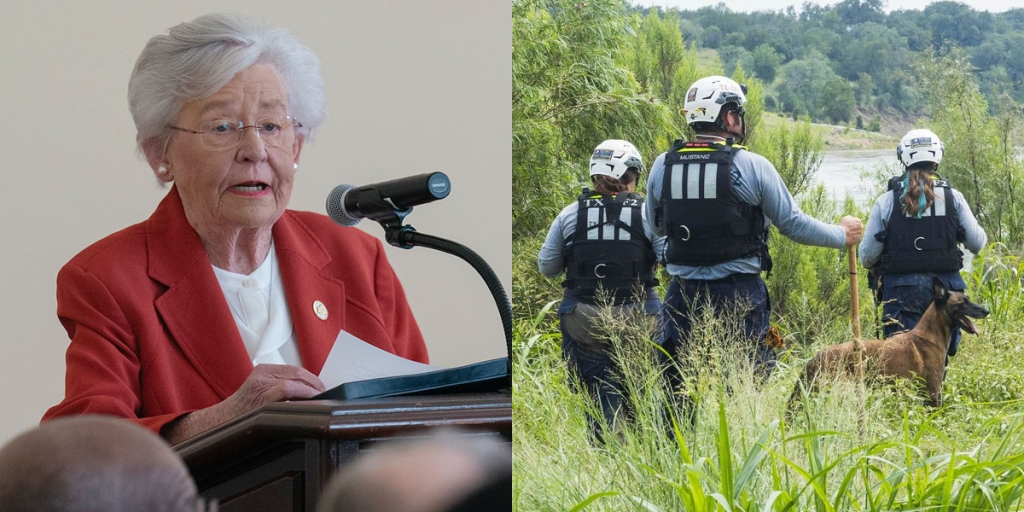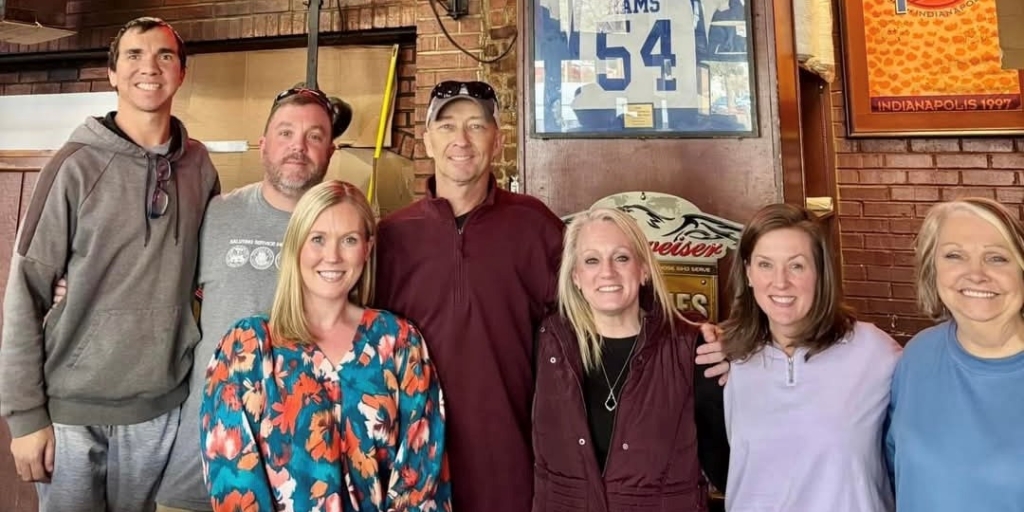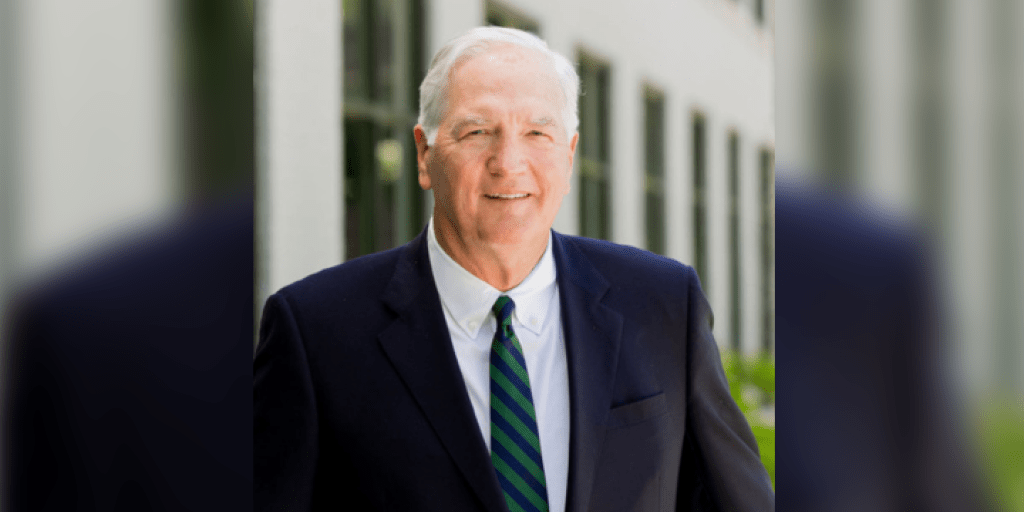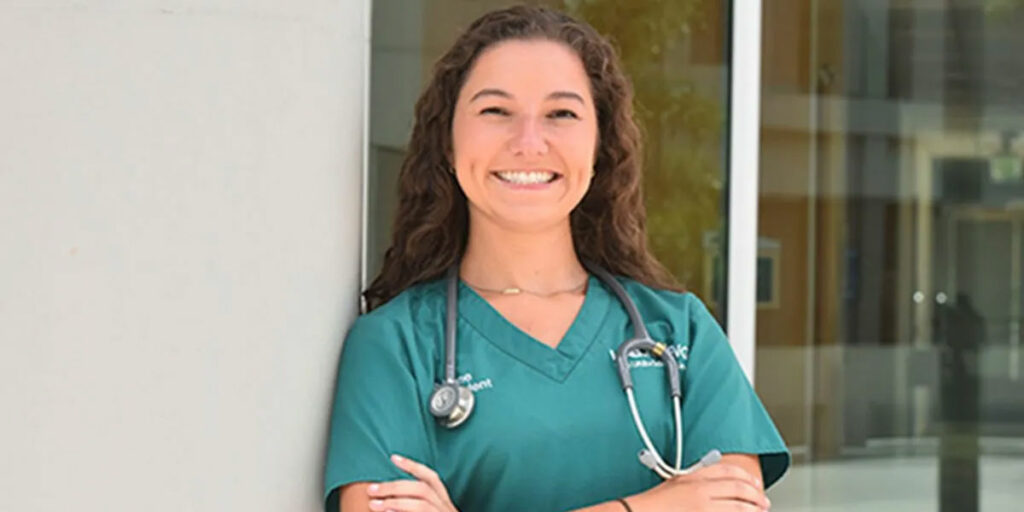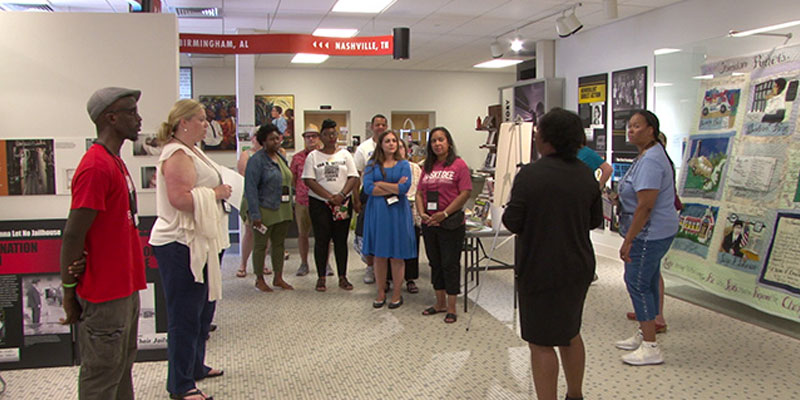The numbers – and the heartbreaking stories contained within them – are staggering.
According to the Centers for Disease Control and Prevention, two out of three drug overdose deaths involve an opioid. Overdose deaths from opioids, including prescription opioids, heroin and synthetic opioids like fentanyl, have increased almost sixfold since 1999. Opioid-involved overdoses killed more than 47,000 people in 2017, and 36 percent of those deaths involved prescription opioids.
Alabama is not immune to the consequences of opioid use. In 2017, the state had the highest overall opioid prescribing rate.
Why is that, and what can be done to make sure people are cared for while not harming them at the same time?
The University of Alabama at Birmingham has made significant contributions in the battle against opioids in the research field and at the bedside, all in an attempt to answer those questions and, ultimately, save more lives.
How did we get here?
Dr. Stefan Kertesz, an addiction scholar and professor in UAB’s Division of Preventive Medicine, has been a vocal leader in the fight against addiction. He has been an influential national voice by demanding opioid prescribing policies be made clearer, on behalf of patients and the doctors prescribing them.
Kertesz said there is no single person or entity to blame for the meteoric rise in opioid-related deaths, but physicians have been part of the problem.
“Part of how we got here certainly reflects a change in medical practice,” Kertesz said. “And that change was that we prescribed a lot more, and we created a market for people in pain – both with a history and with no history of addiction – to have more access to opioids.”
According to the CDC, after a steady increase in the overall national opioid prescribing rate beginning in 2006, the total number of prescriptions dispensed peaked in 2012 at more than 255 million. The prescribing rate was 81.3 prescriptions per 100 people. Although the overall rate has decreased in the past few years, in a number of U.S. counties enough opioid prescriptions were dispensed for every person to have one.
Because of the high volume of patients with opioid-related addictions, UAB saw an opportunity to strengthen its care of these patients. One route it took to enhance care was to create the Addiction Scholars Program.
The nation’s ongoing opioid crisis created a situation in which medical staff in virtually every unit of the hospital can, at some point, expect to find themselves treating patients who are abusing opioids and other drugs.
Created in 2017, UAB’s Addiction Scholars Program gives health care providers training and insight on opioid addiction. The initiative recruits hospital staff – physicians, nurses, therapists, social workers and more – who undergo a 15-month curriculum taught by UAB experts in addiction medicine. The goals are to better prepare staff for the challenges patients face with opioid addiction and to find better ways to provide the appropriate care to this patient population.
“Most physicians don’t receive formal training in addiction management,” said Dr. Eddie Mathews, a hospitalist and one of the first scholars. “Yet there is a clear need for enhanced education for all medical professionals. We need to learn about the disease process in addiction and learn how we can better treat these patients, both for their opioid use and for any underlying or concurrent medical issues.”
At UAB’s School of Dentistry, professors are taking the lead in the dental field to combat the growing opioid epidemic in hope that their measures will be translated into other practices and fields across the state and country.
“The public health crisis we are dealing with stems from many roots, ranging from easy access to prescription medication and the quantity in which medication is prescribed, to the inability of physicians to set realistic expectations with patients about pain,” said Dr. Nico Geurs, chairman of UAB’s Department of Periodontology. “As dentists, we’re facing a watershed time when patients have a list of requests for pain medications that they think they need and expect to receive, none of which are in line with reality. Pain management with opioids has been normalized in American culture, and it’s rapidly spiraling out of control.”
UAB dental students study pain, anxiety and pharmacology, and they learn to care for people in active addiction and recovery. Their training emphasizes best practices in pain management – such as dispensing small medication doses – and the complex factors to consider when prescribing. Two examples: UAB dentists take thorough patient histories, noting requests for specific painkillers, a possible sign of abuse. They check the Alabama Prescription Drug Monitoring Programdatabase to see who already has received potentially addictive medications.
“Closing the loop isn’t easy, and this is new territory for all of us,” Geurs said. “For the School of Dentistry to be in a position where we can help alter the trajectory of this epidemic is one that we take with great responsibility, and we hope public and clinical education will help protect others moving forward.”
More students at UAB’s School of Nursing use its state-of-the-art Nursing Competency Suites to train students to treat infants born to mothers who used opioids during pregnancy. Students are trained to treat these infants through an NICU simulation lab, which includes an NICU infant manikin that is able to mimic symptoms of a baby suffering from opioid withdrawal.
Strengthening commitment to care
Opioids can affect many different people – chronic pain patients, pregnant mothers – and often lead to other forms of addiction.
UAB Medicine’s Addiction Recovery Program offers an individualized approach to the assessment and treatment of alcohol and substance abuse. Staff includes licensed and certified counselors and social workers who work with patients individually and in groups to provide thoughtful, caring treatment for addiction.
Recovery is possible, Dr. Cayce Paddock emphasizes.
“Some of the most psychologically and emotionally healthy people I know are in recovery from a substance abuse disorder,” said Paddock, who leads the program alongside Dr. Peter Lane. “When I see someone in active addiction, I see them at their lowest. But they can live and thrive. When I meet people in active addiction, I see them as they can be, not as they are in that moment.”
Unfortunately, opioid addiction can affect the most vulnerable as well.
The National Institutes of Health found that a baby is born suffering from opioid withdrawal every 15 minutes in the United States. Use of opioids during pregnancy can result in a drug withdrawal syndrome in newborns called neonatal abstinence syndrome, or neonatal opioid withdrawal syndrome (NAS/NOWS).
The Comprehensive Addiction Pregnancy Program, led by Dr. Lorie Harper and UAB’s Maternal-Fetal Medicine team, provides an environment in which women suffering substance-use disorders during pregnancy and postpartum can experience recovery through comprehensive, peer-supported, multidisciplinary care. CAPP’s group prenatal care area provides a full complement of obstetric addiction therapy, including opioid replacement therapy, sub-specialty pediatric follow-up, care coordination, social services, peer recovery support and in-home parenting education.
In April 2019, CAPP celebrated its first year of outpatient treatment, graduating more than 40 women through the program from pregnancy to postpartum support. The program is growing tremendously and serves a critical role in providing necessary care and support to addicted mothers.
Alabama hospital emergency departments have become all too familiar with patients suffering from opioid overdose. According to the Centers for Disease Control and Prevention, Jefferson County alone had 98 deaths from heroin and 104 from fentanyl use in 2017.
“Emergency departments are the tip of the spear where societal problems meet health care,” said Dr. Erik Hess, vice chairman for research for the UAB Department of Emergency Medicine. “The nation’s opioid epidemic plays out every day in our emergency departments.”
The department has launched a new initiative to help patients with opioid use disorders get appropriate therapy and referral for further assistance in an effort to put a dent in the epidemic.
The program, called the ED MAT, or Medication Assisted Treatment Protocol, is funded by a $1.5 million grant from the Substance Abuse and Mental Health Services Administration, part of the U.S. Department of Health and Human Services.
The program has several components. ED MAT protocols include the use of buprenorphine/naloxone in the ED to treat the symptoms of opioid withdrawal and to decrease cravings. It is followed by a short-term prescription of buprenorphine/naloxone, if appropriate, and a take-home naloxone kit. Buprenorphine/naloxone, also known as Suboxone, is used to treat opioid use disorder. It can reduce withdrawal symptoms for 24 hours. Patients are connected with a peer navigator while in the emergency department. The navigator assists patients with referrals to follow treatment through the Recovery Resource Center of Jefferson County at Cooper Green Mercy Services.
Prevention through technology
Monitoring the latest tactics in drug sales used online to mask the activity, such as new street names for drugs, is the focus of a partnership between the UAB Computer Forensics Research Lab and Facebook. UAB works closely with Facebook’s Community Operations team to flag content that may violate its Community Standards for illicit drug sales.
“Our partnership with Facebook has grown from identifying spam to anti-terrorism work and now combating drug sales online,” said Gary Warner, director of research in computer forensics in UAB’s College of Arts and Sciences. “Our students receive hands-on learning in monitoring online communities to identify and develop a database of terms attempted by bad actors to skirt detection. These key terms will be used within the coalition to fight drug sales across multiple platforms.”
With the expertise based at UAB, CFRL shares insights from its research with Facebook and from what is monitored elsewhere on the web.
The CFRL works closely with the UAB Forensics Science Program led by Elizabeth Gardner, Ph.D., in the Department of Criminal Justice to study emerging drugs of abuse, and counterfeit and illicit drugs purchased online. The interdisciplinary partnership combines the online criminal expertise of CFRL and Gardner’s ability to perform drug analysis, along with her and her students’ chemical expertise, to assist a variety of law enforcement and government agencies.
In working with Gardner and her chemists, the CFRL team now has more than 350 search terms for synonyms and analogues of fentanyl. A combination of pairing these keywords with phrases about the purchase and shipping of drugs, combined with a complex “white list” of academic, medical and journalistic mentions of drugs, helps the team quickly target drug sales sites while avoiding many unhelpful sites.
Future of care
Unfortunately, experts agree that opioid-related issues seem to be here to stay – at least for the time being. With that understanding, UAB has commissioned an Opioid Stewardship Committee. A kickoff meeting will take place this summer, when the committee of about 40 members will be present.
The committee’s mission and vision is to provide safe, effective and patient-centered pain management at UAB Medicine. It will create an organizational infrastructure that advocates for safe opioid prescribing while sustaining effective, patient-centered pain management throughout UAB Medicine through engagement and education of patients, clinicians and administrators.
“The opioid crisis has had a significant detrimental impact on our community,” said Dr. Juhan Paiste, an associate professor of anesthesiology who will chair the Opioid Stewardship Committee. “With the Opioid Stewardship Program, we hope to address the complex issues and pain management needs that our patients have, and ensure our providers have access to the most innovative, efficient, evidence-based and safe-practice guidelines. We know that, once we have our resources and best practices in place, we can make a positive difference for everyone.”
UAB’s commitment to lead in the delivery of the highest-quality patient-centered integrative care is clearly defined in the university’s strategic plan, Forging the Future. Its desire to engage with the community and expand access to resources is a key focus, as is improving the welfare of our society.
The knowledge and will to fight the opioid epidemic from all angles – from the medical care and services it provides to aiding law enforcement and social media giants as they work to identify, squeeze and dismantle online drug dealers — is why UAB is best positioned to combat the far-reaching opioid crisis.
“UAB is a national leader in research, clinical care and medical education,” said Jordan Demoss, UAB Medicine vice president of Clinical Operations. “We have a responsibility to find solutions to this problem. Our goal is to truly implement a multidisciplinary, integrated approach to battling this epidemic.”
This story originally appeared on the University of Alabama at Birmingham’s UAB News website.
(Courtesy Alabama NewsCenter)






